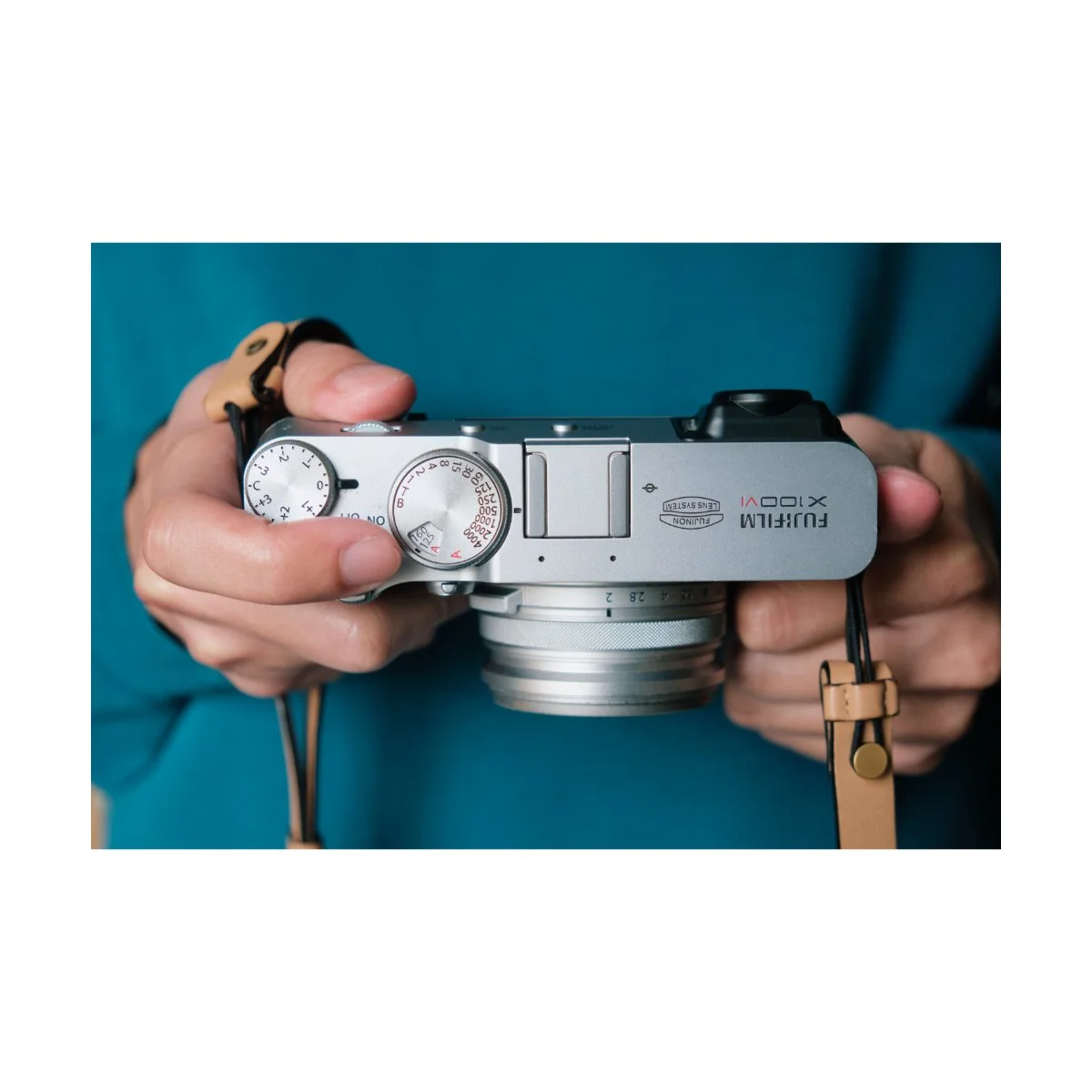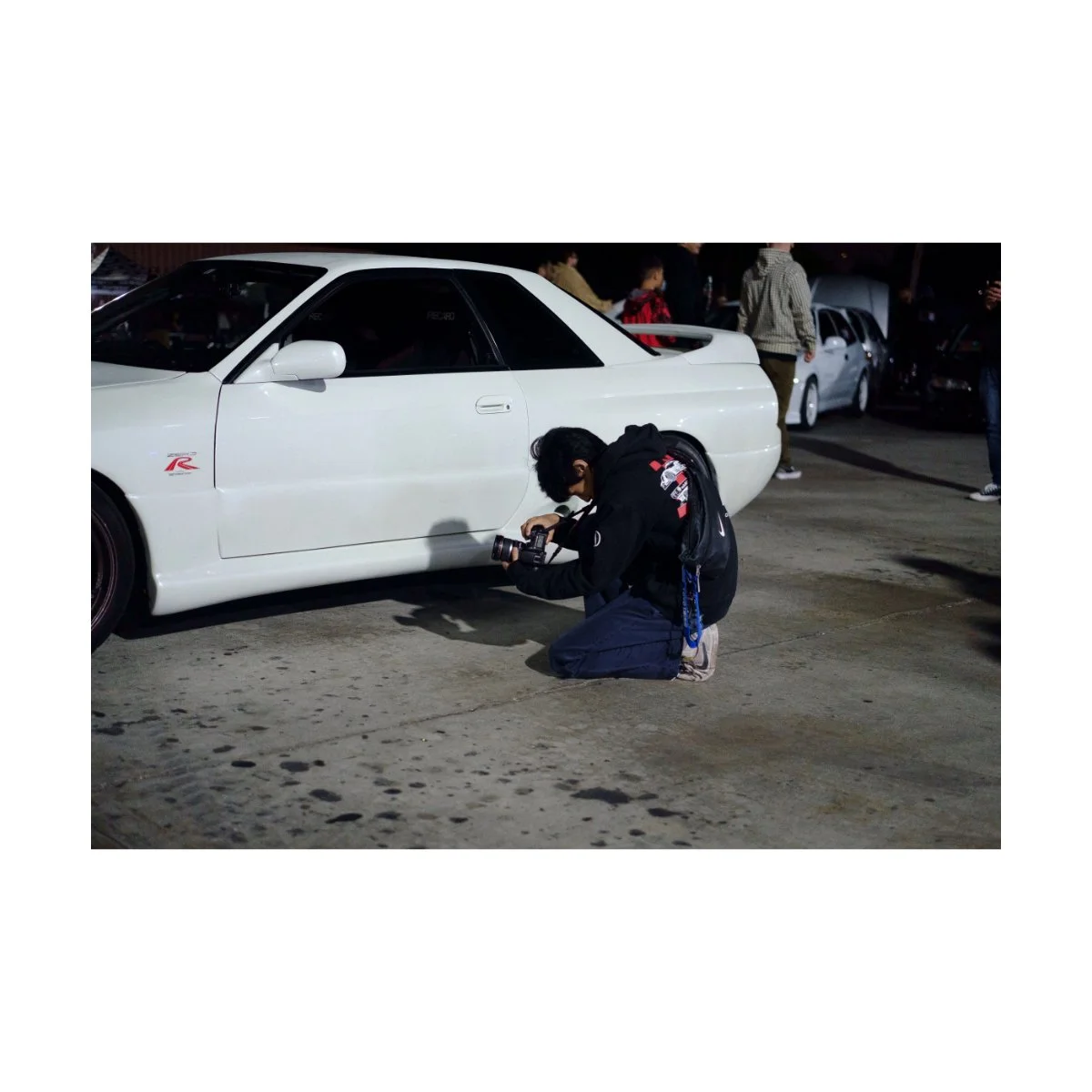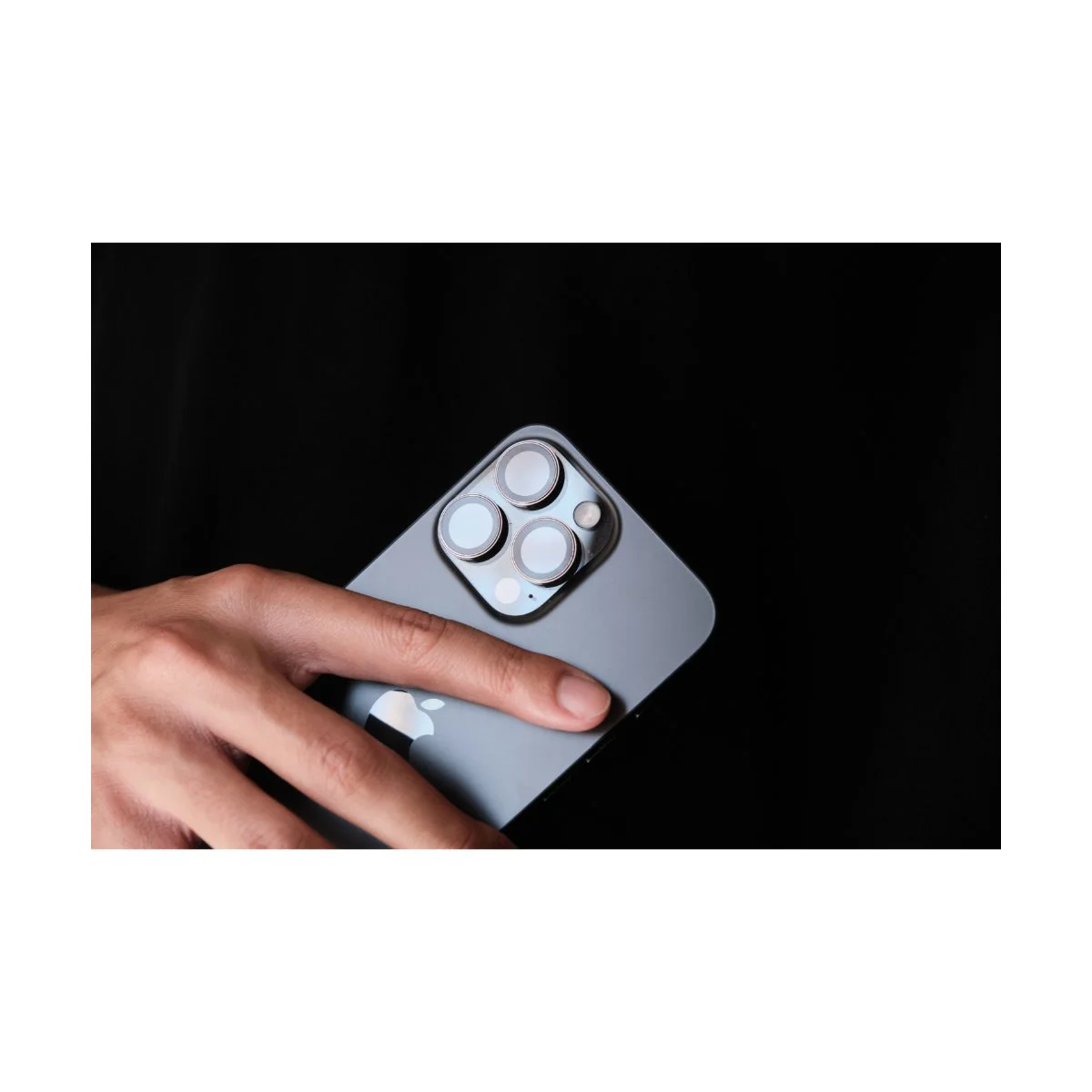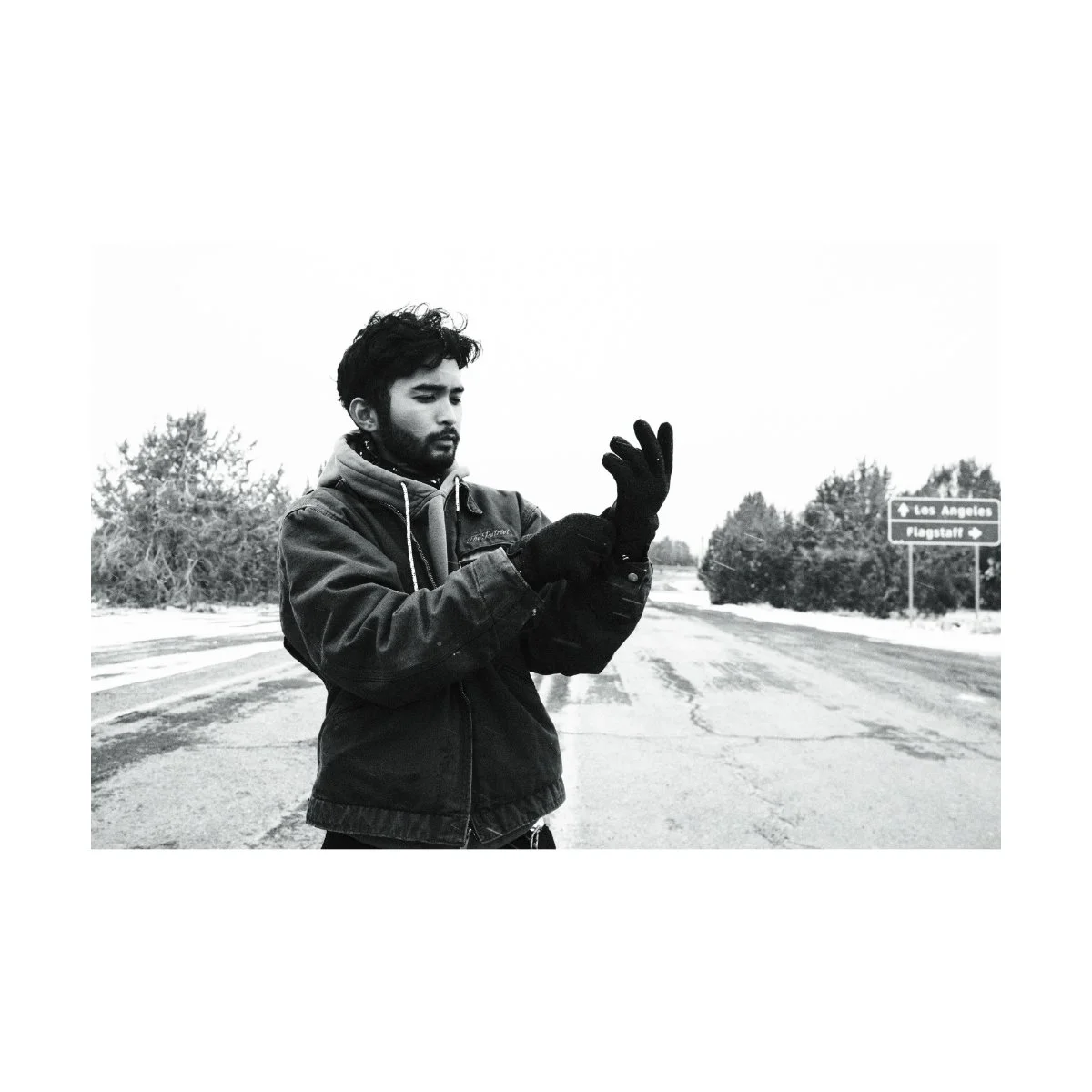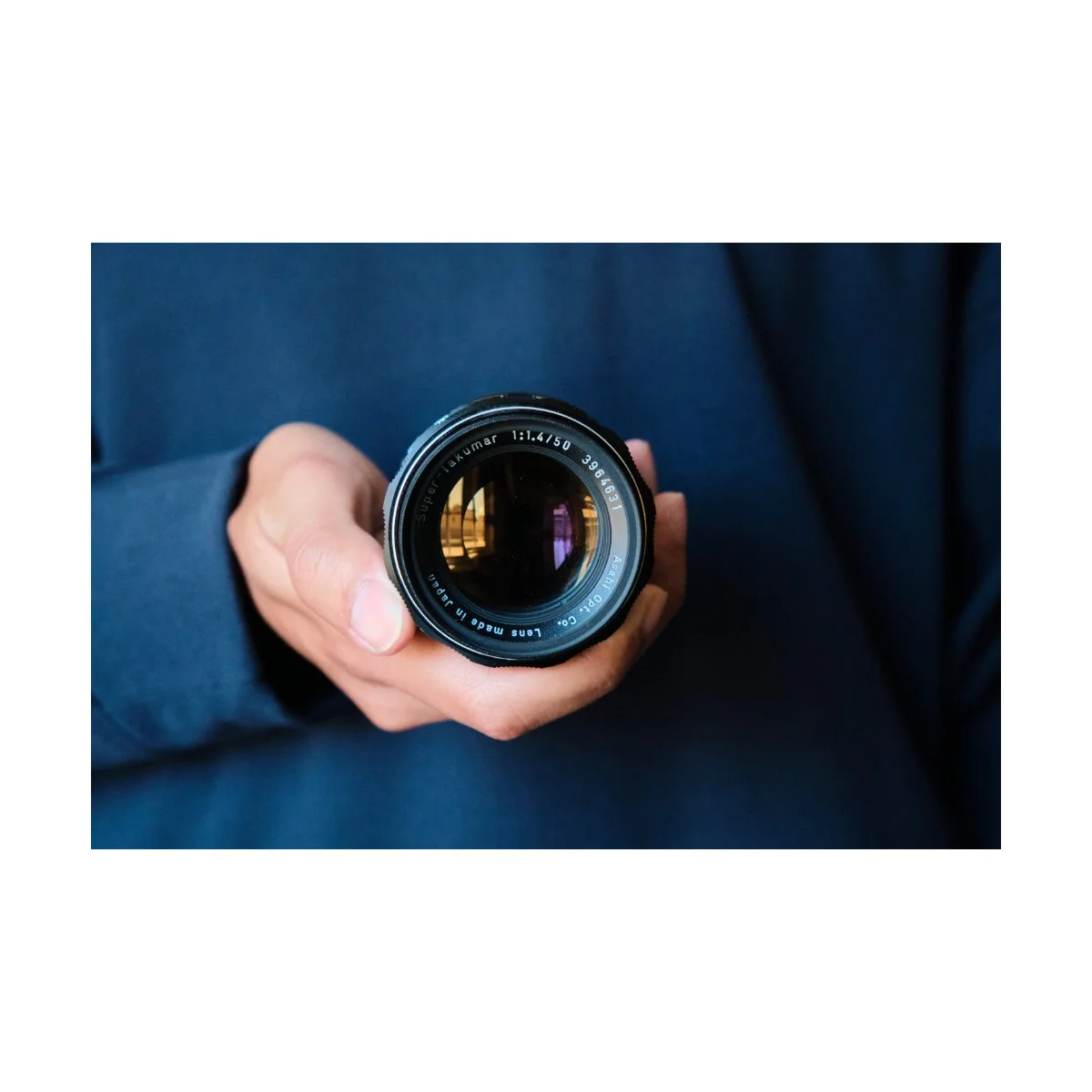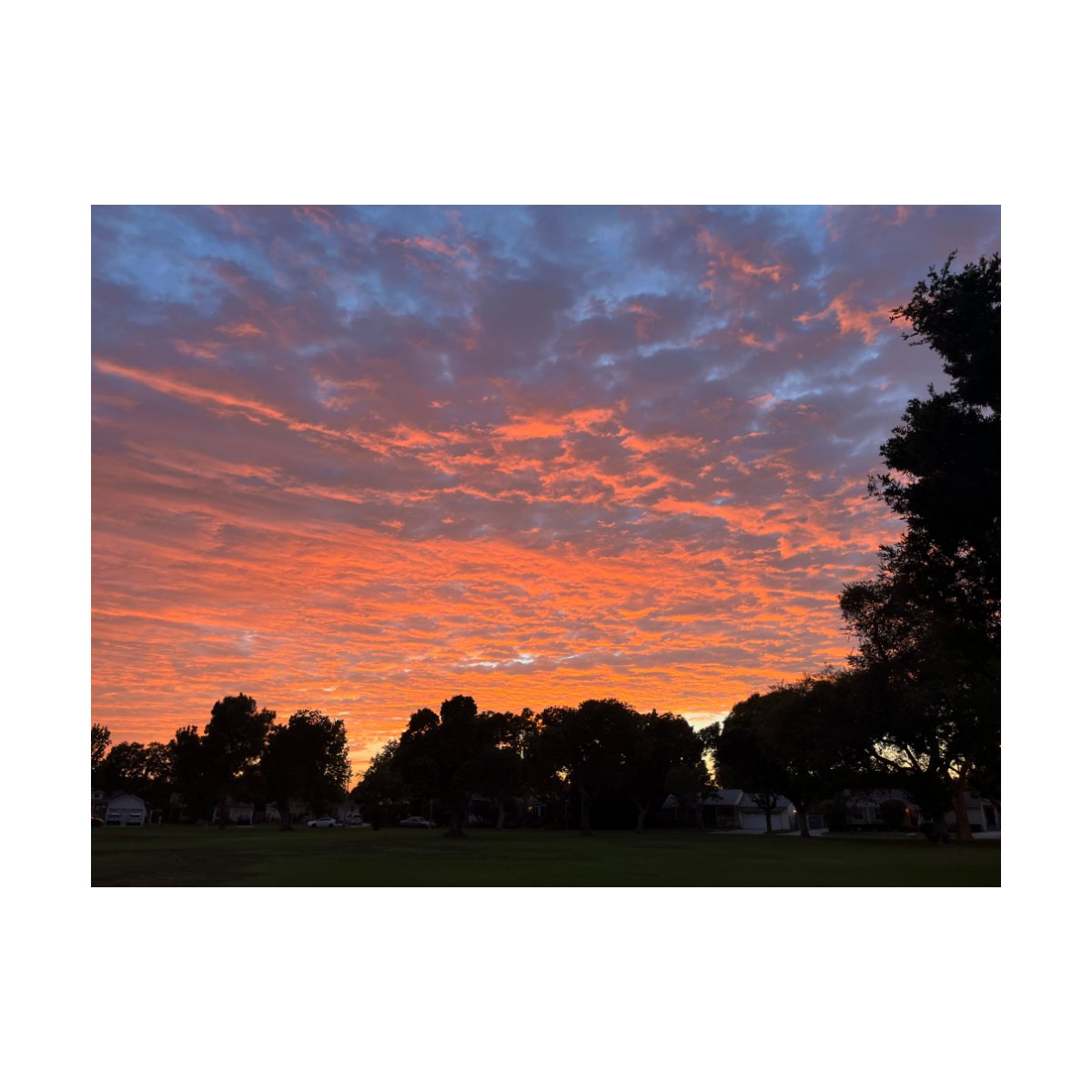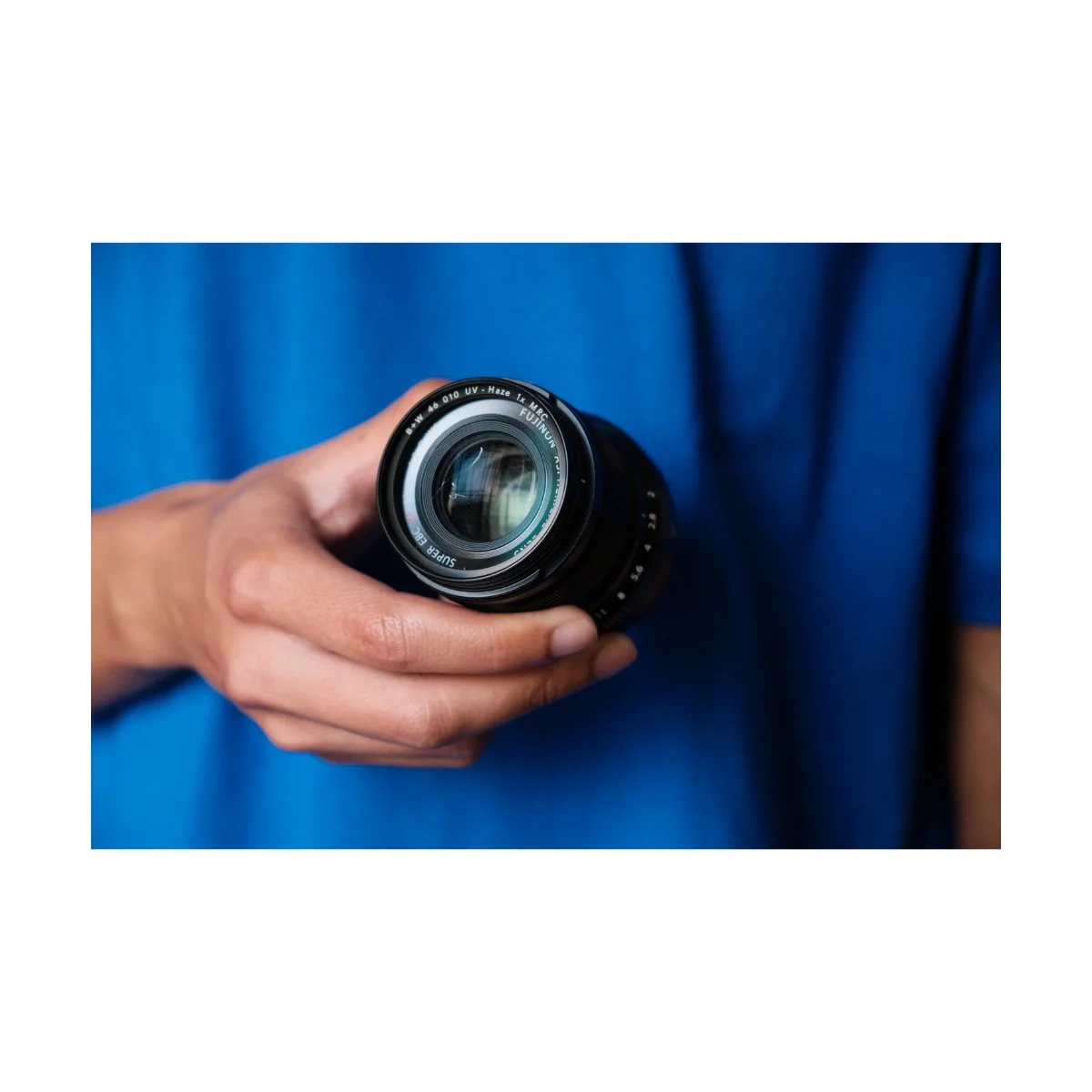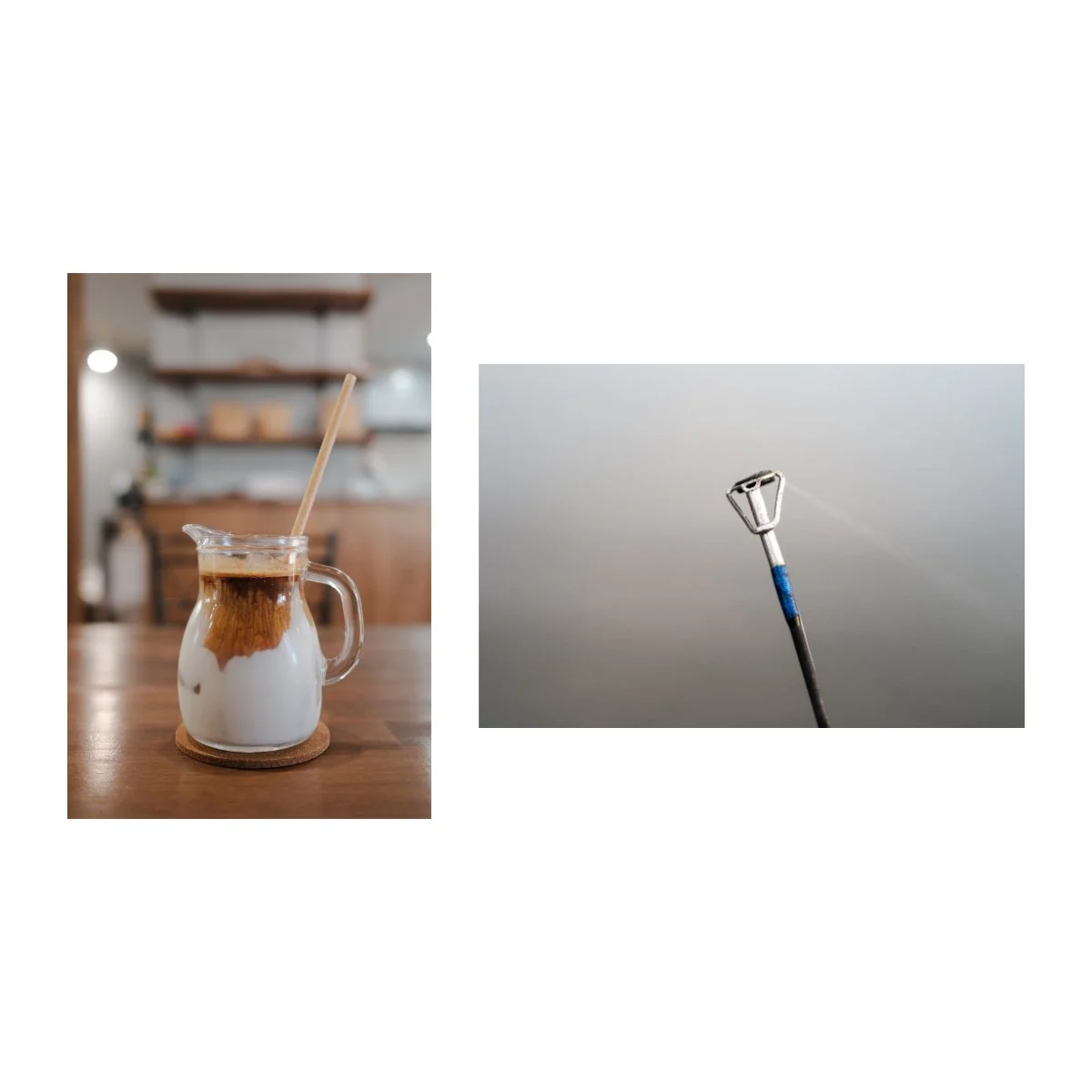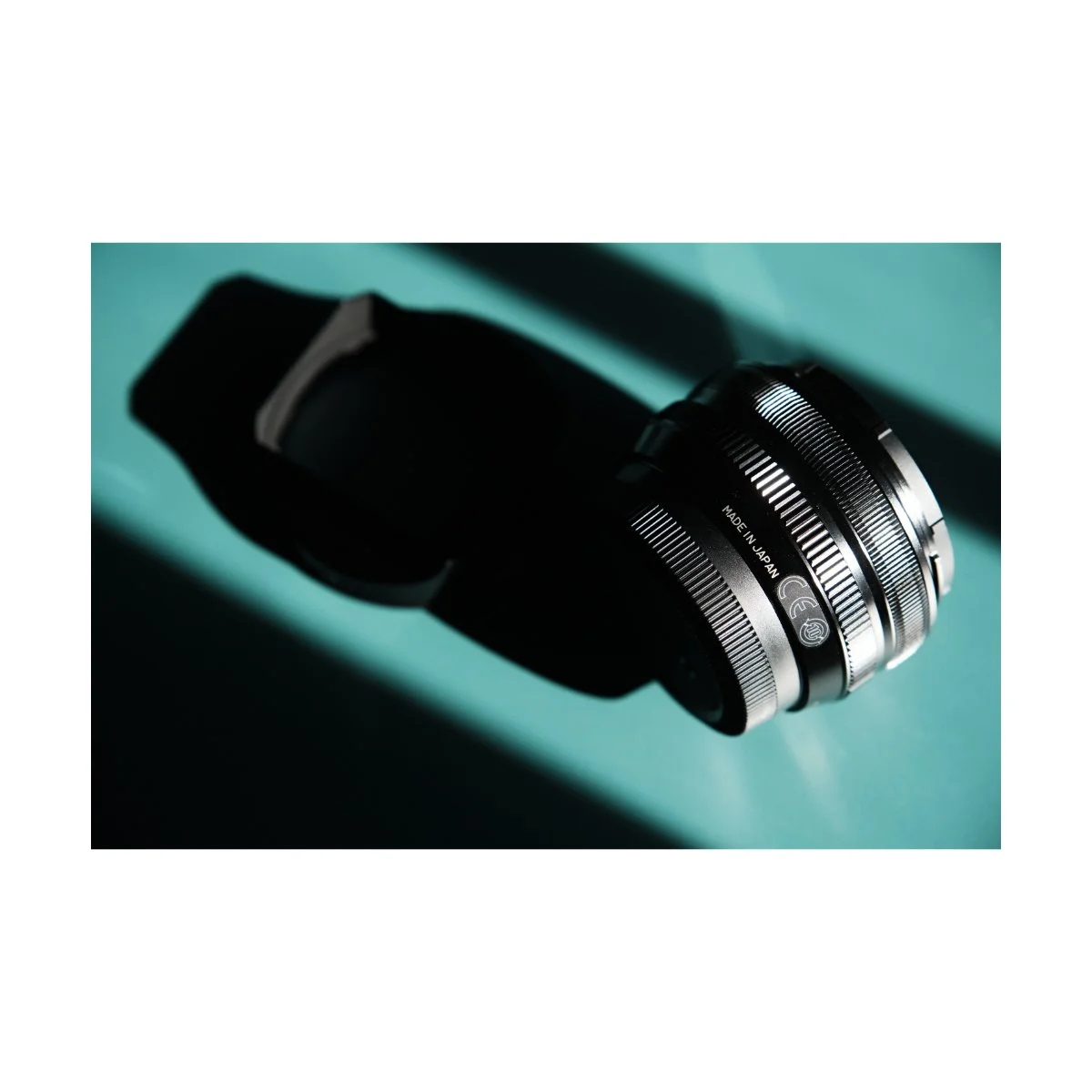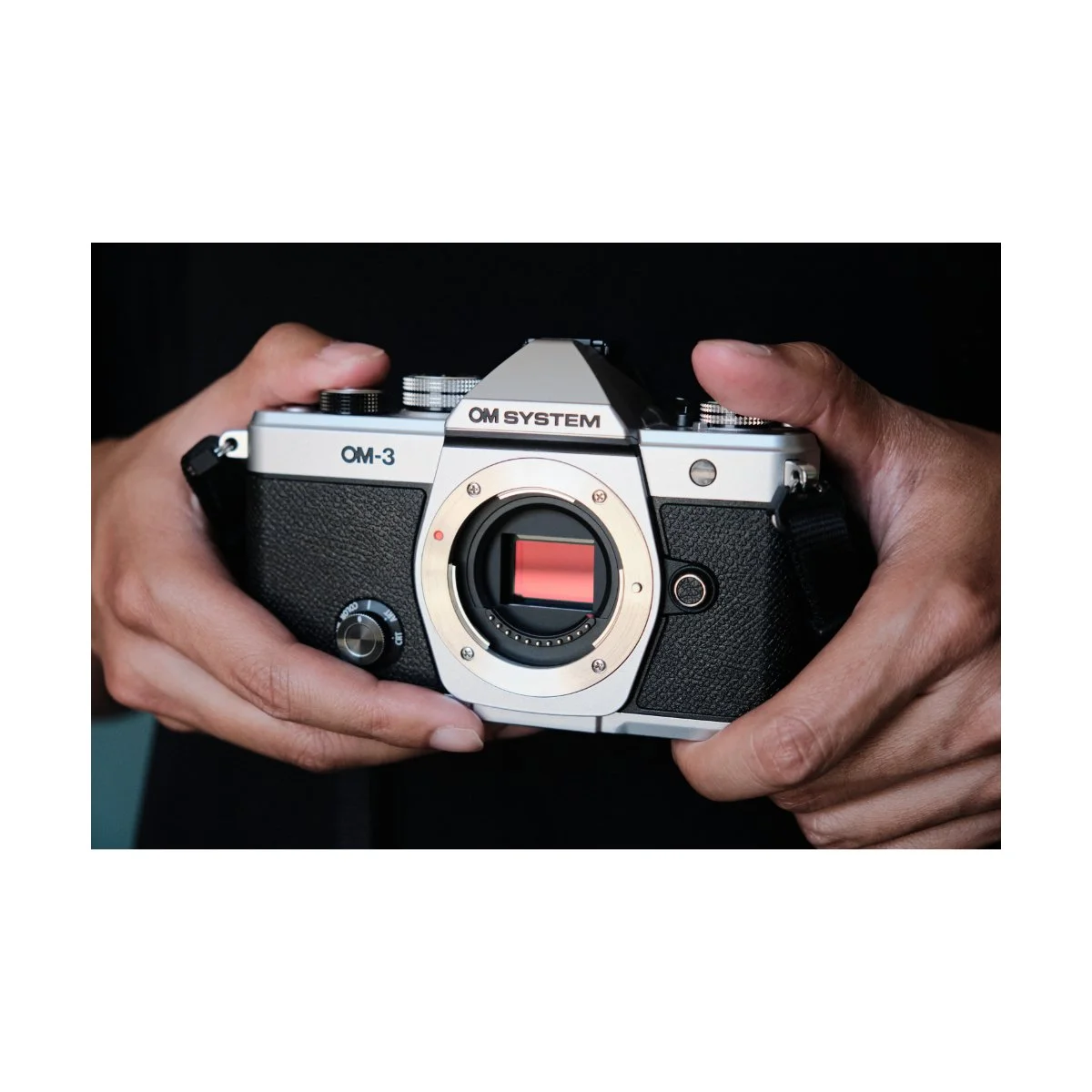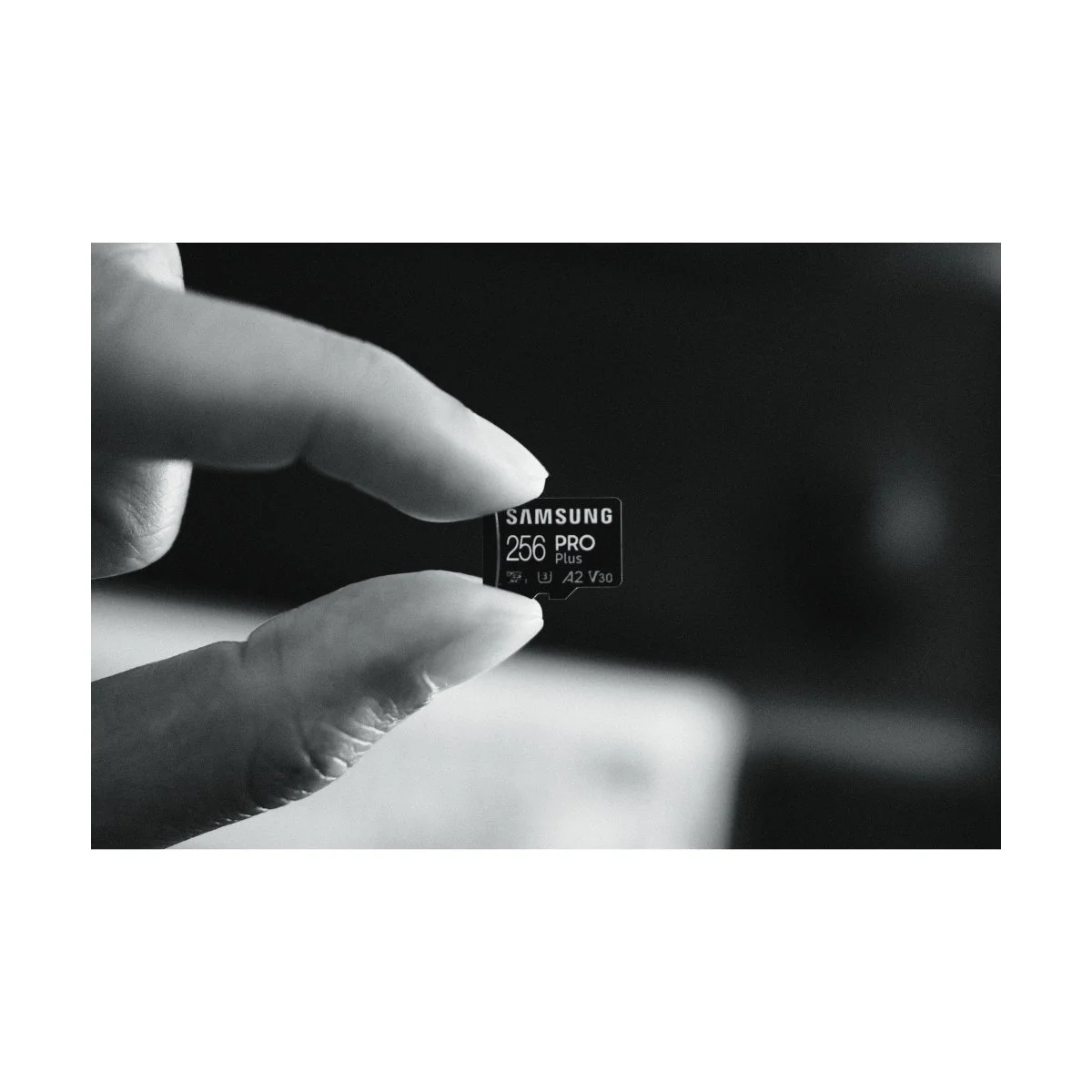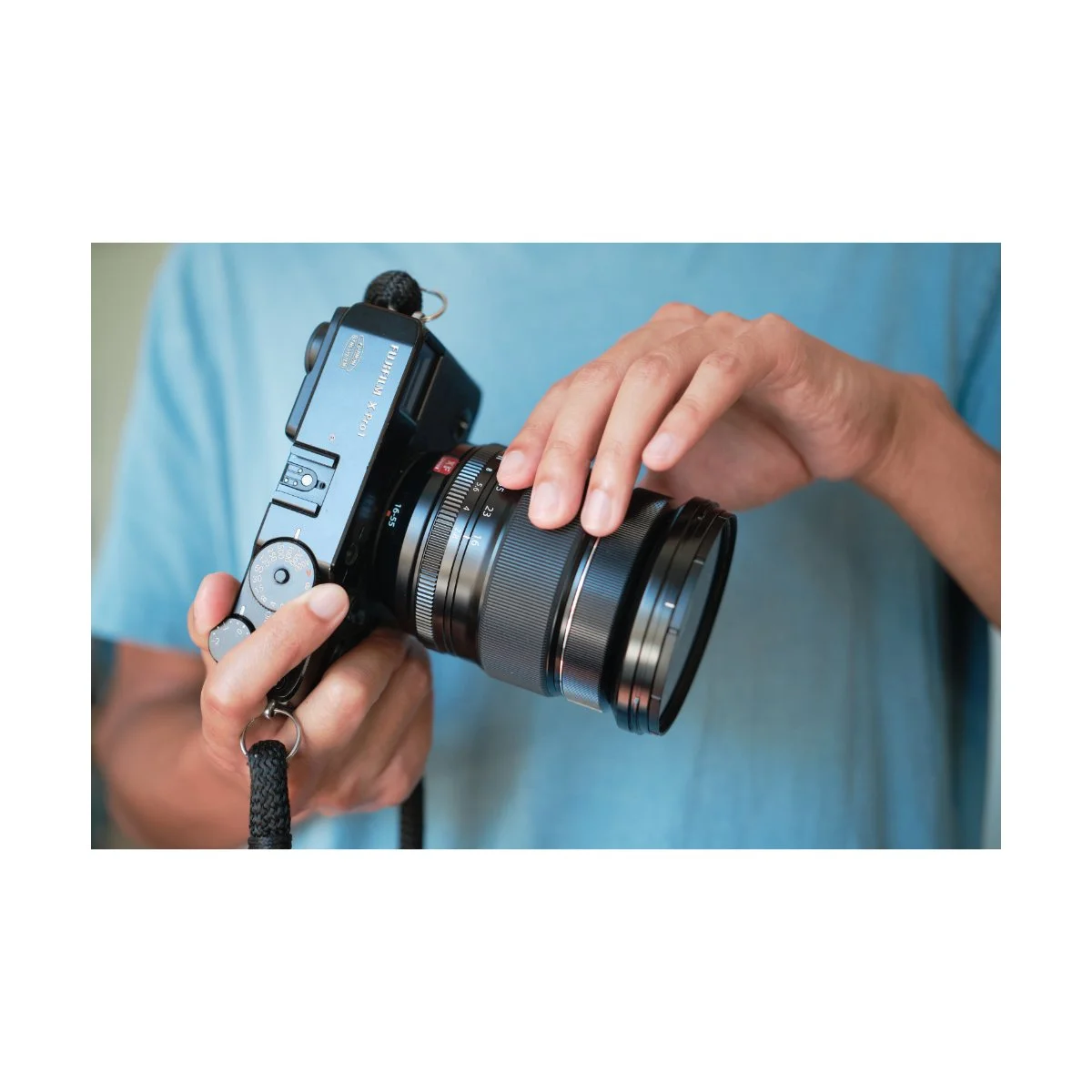Why Buy a Camera When Smartphones Exist? The Full Breakdown.
Are cameras actually better at photography than smartphones?
The other day I got an interesting question about the benefits of using either one for photography.
The person had been taking and editing photos on his phone, no problem.
He didn’t really need a camera, but was still interested, and wondered why people used them.
Because for all he could tell, carrying a bigger camera would be less convenient and more expensive (since it also meant buying lenses) - and if that’s the case, does he actually need one?
This is a common concern especially for avid phone users entering the world of cameras.
But from my experience, I can say without a shadow of a doubt:
Smartphones will never replace cameras.
Now - this is not because smartphones take bad photos.
And this is certainly not because I’m trying to sell you on cameras.
But rather because they are different tools - and there are legitimate benefits to using a camera for photography.
To better get this, we must understand what smartphones do, what they’re built for, and what cameras can do that they can’t.
And I’ll give you some recommendations if you feel similarly to our friend above.
Let’s dive into it.
Ergonomics
You may or may not have noticed but taking photos with a phone isn’t ideal.
Most phones are built for swiping and scrolling, not photography.
Plus, if you pay attention to the design and shape of a phone, they’re really just flat screens.
There’s no grip, few buttons, and everything is controlled through a touchscreen.
Most people don’t notice this however, until they start using real cameras.
With a real camera, the design and shape are built for photography.
You have a shutter button in the perfect place for your index finger, a grip to easily pick up and swivel the camera, and plenty of dials to help you change your custom settings.
You can also get ready for shots by turning the camera on ahead of time making it so you don’t miss the moment.
Whereas phones, you still have to look at the screen to open the camera app, drawing your attention away from the scene.
This doesn’t mean that using a phone is impossible, but in my opinion, there’s more steps, and less control.
This is more obvious when it comes to changing settings.
In my experience, changing settings on a smartphone, or really any touch screen is a pain.
Why do you need to change settings?
Well, most people don’t.
Phone cameras often set everything to auto and will give you good exposure so you don’t have to worry about that.
But as you get more into photography, you’ll want to be specific about the settings you’re using because they affect how your images look.
Plus, you don’t want the phone to change your shutter speed or iso without your permission.
It can create things like blur and noise that can ruin your images.
The common solution is to buy or download an app that allows you to manually change these settings.
This is because iPhones don’t typically allow you change things like aperture or iso (I don’t know if this also applies to android).
So you’ll get an app, tweak a few things here and there, but soon realize that the process is slow and clunky.
This is because you have to use the touch screen for everything, and by the time you’ve got your settings right, you’ve missed the shot.
When it comes to adjusting settings, I personally hate touchscreens.
Even on real cameras, which can be a bit better since there are dials, it’s still a pain in the ass.
With the advent of smartphones, camera companies have tried to integrate and use touchscreens, but they’re not as good as phones - and everything is way too small.
And if you’re out in the forest in a cold climate with gloves on, good luck.
It’s for good reason that I shoot Fujifilm, which has mostly manual dials.
Other cameras have dials and buttons as well, but they’re not as good as Fuji’s, at least in my preference.
With Fujifilm, I can change nearly everything I need by just pressing buttons and rotating dials, and I rarely have to go into the menus.
That way, all I have to worry about, is taking photos.
It’s a case of: newer isn’t always better.
So the ergonomics of cameras were built with photography in mind, as opposed to phones, which were built for swiping and scrolling.
Although it may seem minor, this makes a big difference when you think about the process and end result of photography.
Lenses
Probably the biggest difference between phones and cameras are the ability to use lenses.
Say what you want about clip-on phone lenses, they’re not the same.
One of the concerns our friend from earlier had was:
He saw lenses as a downside.
For him, he probably thought it was another expense for his wallet, another thing he had to learn, and something else he had to carry.
But here’s a secret - lenses are actually the reason why professional photographers’ and artists’ photos look so good.
They’re not simply a “have to”, they’re the very thing that changes your images and levels your photography up.
When you understand this, you’ll start viewing lenses as a good thing and the very reason why you’d shoot with a camera over a phone.
Let’s understand lenses a bit more.
Focal Lengths
The lack of variety in focal lengths used to be a big problem with smartphone photography.
Back in the day, most smartphones only shot in one focal length, and zooming in and out with your screen resulted in a digital zoom, which meant a loss in image quality.
Cameras on the other hand, featured either a built in lens that could zoom or interchangeable lenses, allowing you to switch focal lengths when taking photos.
Why is this important?
Well, image quality is important, yes, but in terms of photography, focal lengths are literally how you see the world.
As I’ve become more experienced, I’ve learned to view different lenses like different eyes, and switching between them changes what I pay attention to - and therefore the world I see and the photos I get.
So getting different lenses is not simply a thing you have to do - its a thing you want to do to find the focal length that most gels with you.
Originally with a smartphone you’d see the world in one focal length - an 18mm, which was standard at the time.
But what if you didn’t see the world in an 18mm? - you’d need something different to match your preferences.
I met a gentleman the other day who’s preferred focal length was 85mm and 105mm full frame.
He liked shooting from afar and seeing things “over there”, and those focal lengths suited him.
And smartphones, although getting better, probably couldn’t give him the same photography experience.
Thankfully this is becoming less of a problem with the introduction of multi-lens smartphones.
These days, phone companies have learned to add a wide angle and telephoto lens to the back of their phones, allowing you to switch between focal lengths without a decrease in image quality.
This means you can now explore different field of views - but you’re still limited to only a select few.
So why am I telling you all this?
Well, this is to say: if you’re in a position of transition from smartphones to cameras, one of the benefits you can look forward to is finding your focal length.
Experimenting with different fields of view can teach you tons about how you and others see the world - and that will make you a more complete photographer.
And finding that one focal length, which you might not have on your phone, can be the breaking point between something that’s just fun and something that feels like magic in your hands.
Then you can dial down onto that look, invest money into a quality lens, and level up.
Because as we’ll learn in a second, the glass in front of your camera matters more than you think it does.
Good Glass
A big difference in image quality is due to the glass in front of your sensor.
We’ll talk about sensor size in a little bit, but think of “glass” like an eyeball.
All of us have different eyeballs, some of have 20/20 and others don’t.
I personally wear contacts and that helps, but otherwise the world I see is a blurry mess.
Similarly, I’m nearsighted, making things closer up better quality than things far away.
The variety of vision of our eyeballs is similar to the variety in camera lenses.
Some lenses are good at shooting super close, like macro lenses.
Other lenses have wide maximum apertures like f1.0, which allows you to bokeh your image to oblivion.
And there are plenty of older vintage lenses that have unique characteristics to them, many because they are optically imperfect, which creates an interesting aesthetic/appeal.
The Helios 44-2 for example, is a popular vintage lens known for it’s swirly bokeh.
Similarly, many Fujifilm users will know of older X-Mount lenses which have a reputation for their “character”.
This is disregarding focal length by the way.
So different lenses aren’t actually a downside.
Rather, it’s an opportunity to open your photography world up to something new.
And much like the little filters on your phone, there are a bunch of different things to play around with.
Little choices can differentiate your photography from others, make photography fun again if you’re bored, and just teach you more about how different looks change the feeling of certain images.
All of these reasons are why other photographer’s photos you may see on Instagram or YouTube look different than yours.
Because they not only understand the variety of focal lengths and how to make them look good, but also because the very glass in front of their cameras changes the quality of the images.
It’s why there’s a difference between things like cheap third party and premium “g-master” lenses..
It doesn’t mean you need the best of the best to take good photos, but good glass has better optics for a reason.
Think: $1000 eye vs. $100 eye.
And then, think: Camera eye vs. Smartphone eye.
Sensor Size
Sensor size is one of the biggest reasons people choose cameras over smartphones.
What are sensors?
To put it simply, it’s the part of the camera that captures light and processes it into an electronic signal which eventually becomes a photo.
I.e. The shiny box in the center of your camera when you take your lens off.
Why do they matter?
Well, if it’s literally the thing capturing the light that gets turned into an image, that’s why it matters.
Is a bigger sensor better?
It depends on what your goals are, but in general bigger sensors give a better image quality.
Many will say larger sensors have less noise, better lowlight performance, and more detail.
If you take a look at the lens of your smartphone, you can see how small it is when compared to a larger camera.
The sensor, although not visible from the outside, is hiding back there, and of that general size.
If you want a direct size comparison, you can look one up on google and see just how big the difference is.
Now, how does it affect our photography and how we capture the world?
I’m not a very technical photographer, but I’ll explain sensor size how I think about it.
This is a descriptive analogy by the way, so it might not be how sensors work scientifically, but it’ll help get the point across.
Imagine you could carve a photo out with your finger.
As in: you drew a large box in front of you and that became your photo.
Or you held your hands out in the shape of a camera and “took a photo”.
The “focal length” persay would vary depending on what you’re looking at, but that’s the general premise.
This “box” is your “sensor” and the bigger the box is, the closer it matches reality.
Now imagine you took that box and compressed it, squeezed it down into the box matching the size of your camera sensor or phone sensor.
That would be the “image” you get when taken with a camera or phone.
Reality, or real life size, compressed, resulting in the image you take, edit, and post on Instagram.
Which “image quality” do you think would be better?
The one compressed into a larger sensor or a smaller sensor?
Obviously, the larger sensor image would be “better” because it’s less compressed and more true to real life.
And the “ideal sensor” in terms of just being closest to real life would be a “life sized sensor”, but that’s somewhat impractical.
This is how I think about sensor size in photography.
Bigger sensors “look better” because they match reality more, while smaller sensors stray further and further from it.
What this looks like in an image is a flatter photo, less visual depth of field, and less of reality captured.
This is why some photographers prefer to shoot medium format and even large 8x10, despite the expenses or size.
Because the images themselves will have a different look - and for them, that’s worth it.
Now take another look at your phone, and imagine the small sensor behind the lens.
Compare it to the larger sensor of your camera.
Big difference, right?
So this doesn’t mean you can’t take good images with a smaller sensor, it’s just bigger sensors generally have a better image quality for the reasons we just mentioned.
This also doesn’t mean you need to get the biggest sensor.
Rather this means sensor size is based on preference, and about finding the right trade-offs to match your photography.
I myself shoot APS-C because it gives a better quality than smartphones, is generally more convenient than full frame, and still looks pretty good.
Furthermore, full frame is only 1.5x the size of APS-C, which is a trade-off I’m fine with.
So understanding that, the benefits of shooting with a camera are the larger sensors you can access.
And smartphones won’t ever replace cameras, because I don’t think it’s in their best interest to ever slap a sensor of that size onto their phones.
Storage & Workflow
A problem every photographer eventually runs into is storage.
If you’re a beginner, this might not be a big deal yet, but here are some conflicts you may have.
Whether you shoot with a camera or phone, storage is that perpetual problem running in the back of your mind.
And no matter how much of it you have, you’ll eventually run out.
This is more of a problem for phones, since depending on what you shoot with, you might not have the option to add an sd card.
Most iPhones are limited by this, and between the many apps, videos, and photos, storage goes by fast.
Which means mobile photographers will eventually have to find some sort of solution.
Usually this means backing up their photos to some cloud based system or transferring their files to a hard drive via a computer.
In my experience, cloud based systems suck because they’re costly, limited in space (since if you’re amassing terabytes of memory it becomes impractical), and takes longer to back up.
They’ve gotten a bit cheaper in recent years, but still cost-ineffective.
Because nowadays you can buy a 5TB hard drive for about $100, which will last you years - and that’s a one time purchase, not a subscription.
I will admit though, the cloud is better for a mobile workflow, especially to edit and post, but probably unideal for a larger long term solution.
The lack of an SD card is not only an issue for storage, but also transferring files.
Transferring and backing up data through an SD card is so much easier.
All you have to do is plug it in, drag and drop, and you’re done.
And although you can technically plug your phone in or use airdrop for Apple users, it’s not always ideal.
With a phone you’ll sometimes have random placeholder files that don’t do anything, they’re just there.
And things like documents, screenshots, and other “phone use” files get mixed up when you mass transfer.
That’s annoying because now you not only have to transfer, but sort stuff out as well.
Whereas with a camera SD card, you don’t have to do any of that.
By default everything is a photo or video, and other files don’t get mixed in.
Which is the great benefit of having something separate just for photography.
Lack of compatibility between files can also be a problem, although that might just be an iPhone to PC thing.
In addition to the lack of memory, workflow with a phone vs a camera is different.
I personally prefer to edit and work on my photos with a laptop or computer.
I think the file organization is easier and I’m more focused and can better make adjustments.
Tablet or mobile editing is something I’ve tried in the past, although don’t prefer it since it’s harder to do deep focused work.
It’s easier to get distracted by messages, open random social media apps, and get nothing done.
In my opinion, a mobile workflow is better for more general, less fine tune adjustments, and for being on the go.
So I’d still rank a computer workflow higher because of the level of control, the ease of back up, and flow between different programs if you’re video editing, designing books, or posting to blogs.
It’s just faster, easier, and more fluid.
Again, most people probably won’t need that for their workflow, but if you’re getting serious about photography or find yourself outgrowing the mobile ones, that’s something to think about.
Screen Time
I think the appeal of smartphones comes with the ability to use one device for everything.
And I will admit, I do use my phone for pictures and videos when it’s more convenient and makes sense.
But over the years I’ve realized that having one thing for everything can actually be a downside.
I hinted at this earlier, but perhaps the greatest hidden benefit of using a camera is to have something separate just for photography.
From using phones over the years and taking pictures of everything from random coffee shops to larger road trips, all that stuff gets mixed up.
You remember it in the moment, because it’s recent, but when I go back and dive through memories and photo sessions, they’re not organized.
They’re just there, in a mess of a folder called “iPhone 2019”.
Now you might be thinking, “Well Andre, that means you gotta organize your files better.”
And you’re not wrong…
But here’s the point I’m trying to make.
Cameras streamlined that for me.
Because instead of taking photos with my phone, I have a camera just for photography.
I use my phone for phone stuff.
I use my cameras for pictures and videos.
Organization is easier because it happens automatically when I transfer files, and life is much simpler and clearer when I don’t confuse the two.
Plus, I don’t have to worry about opening my phone to take a picture and then finding myself scrolling on YouTube.
Little things like this add up, and it’s another thing that helps me stay focused, because I do not need more screen time.
It’s hard to explain, but that division feels really good., one I’d recommend trying if you’re someone who uses your phone too much.
It’s gives you one less reason to pick up your phone, which can go a long way when it comes to habit change.
“But What About Size?”
Most cameras are bigger than smartphones.
And perhaps the reason most people stick to smartphones is due to their size and convenience.
It’s something you’d carry around with you anyways, so using one isn’t like you’re bringing something extra.
So if that’s the case, is it even worth getting a camera?
In my opinion, there’s actually a decent middle ground for camera size.
A lot of people look at photographers and think larger dslr, big lens, whatever.
But there are actually plenty of smaller cameras that could be suited to your needs.
The Ricoh Gr series for example are a bunch of pocketable cameras with great image quality.
They can fit in most things and I think most smartphone users wouldn’t mind carrying one of these around.
However, they are high in demand and somehwat expensive…
The x100 series, although not as small, is the perfect size for me, and I don’t mind slinging it around my waist.
Those are unfortunately expensive too…
You can also buy an old digicam point and shoot, which were popular in the 2000s, until smartphone cameras replaced them.
Those are fairly cheap.
There are even new unique cameras like the Kodak Charmera, which was just released as a little keychain camera.
It’s sold out right now but you’ll probably have a chance to get one in the future.
My point is: if size is a concern for you, don’t worry.
There are options and you don’t need to buy a big and lunky thing just to do photography.
“But I Don’t Really Need One”
At the end of the day, do you really need a camera?
Well, most people don’t.
99% of people will stick to their smartphones and that’s okay.
But if you are thinking about entering the camera world, there are a few questions you should ask yourself:
“Why do you want a camera?”
Is it because it looks cool?
Is it because everyone is telling you to get one and claim that “real photographers” shoot with real cameras?
Or is it because you’re actually interested in what a camera can do as a tool to either change or improve your photography?
Your reason will ultimately determine which path you take.
If you’re interested in photography and want to level up past smartphones, understand visual looks, different lenses, settings, and eventually make stuff with it, this is the stepping point.
For all the reasons we mentioned earlier, cameras are the better tool for photography.
And investing in a better tool will allow you to learn and experience a new side of photography you couldn’t have imagined before.
Now if your priority is to use the easiest and most convenient tool there is, smartphones are obviously your best bet.
But even then, I’d still recommend trying a camera out.
You don’t need to go crazy and be super serious about it, just buy one for fun.
Get a cheap point and shoot or disposable film camera and play around with it.
Or ask a friend or neighbor to borrow one of theirs - someone’s got something lying around.
It’ll be fun and you’ll get a different aesthetic to your photos.
And you’ll learn whether or not you actually want to dive deeper into that side of photography.
Because even though I say cameras are better, I understand they’re not for everyone, and some people actually end up rolling back to their smartphones because they’re more convenient.
And although smartphones will never replace cameras, cameras will also never replace smartphones.
They’re two different devices made for different things.
If that turns out to be you, that’s okay.
I still think the journey is worth doing because now you know what you prefer.
And then you can save your time and money on gear you don’t have to buy and just do photography and live life.
Furthermore if you’ve got buyer’s indecision - just take photos with your phone in the meantime.
There’s no rush and it’s better not to let the lack of a camera prevent you from taking photos.
So, that was a bit of a convoluted way of explaining cameras versus smartphones but, I hope it helped.
If you have a friend who’s thinking about getting into cameras, share this with them.
If you wanna build a solid foundation with photography, check out Photography Essentials - it’s free.
There’s also new limited merch, photography zines, and prints for sale in the links.
And I’ve got a new project coming out soon - look forwards to it.
Thanks for reading, have a great day.
